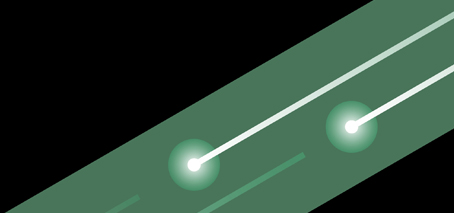FLEET is a collaboration of over 100 universities at seven Australian universities and 18 Australian and international scientific institutions.
FLEET’s seven participating Australian university nodes are in Canberra, Melbourne, Sydney, Wollongong and Brisbane.:
- Australian National University, Canberra
- Monash University, Melbourne
- RMIT University, Melbourne
- Swinburne University of Technology, Melbourne
- UNSW, Sydney
- University of Wollongong
- University of Queensland, Brisbane
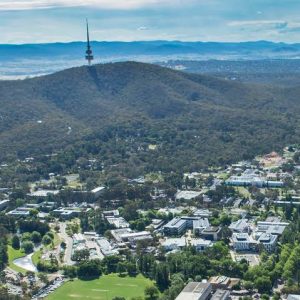 Australian National University (ANU)
Australian National University (ANU)
The ANU is Australia’s only national university and home to some of the world’s leading educators and researchers. Over 3,800 staff drive research and learning excellence at the University. Through their effort, ANU is consistently ranked amongst the top 50 research universities in the world.
The University is committed to attracting, developing and retaining outstanding people and offers flexible employment options for both academic and professional staff.
ANU staff and students are part of a strong on-campus community. They work and study in a rich environment. The campus is like a small town on over 147 hectares of parkland with plenty of shops and cafés, a medical centre and multiple sporting facilities.
ANU is a major base for FLEET’s exciton-polariton research, carrying out both experimental and theoretical research.
- FLEET fields: experimental and theoretical physics
- Chief Investigator: Elena Ostrovskaya
- PhD projects at ANU
- Read stories about ANU research
Melbourne (pop 4.7 million) is famous for a thriving, multi-cultural and arts scene, bars, live-music, and cheap (great) food. FLEET has three member universities in Melbourne: Monash University, RMIT University and Swinburne University of Technology.
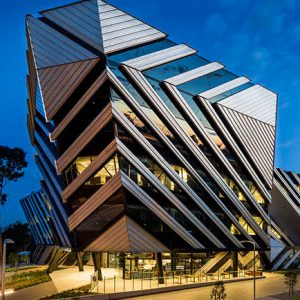 Monash University
Monash University
Monash is Australia’s largest and most international university. Its extensive educational offering, delivered via our 10 faculties, includes undergraduate, postgraduate and research courses. Monash is a research-intensive university, known for some significant and lasting discoveries that have delivered impact beyond the academic community.
The university is home to a range of world-leading facilities and technologies, giving it wide-ranging capabilities across many fields, sectors and industries. Monash works with a variety of industry, government and community groups, allowing its researchers to share their discoveries with the world.
Monash is a truly global institution, with five Australian campuses, a campus in Malaysia, a joint graduate school in China, a learning centre in Italy, and a research centre in India. At Monash, cultural experiences are lived, not described.
Monash is home to a large FLEET research team (almost 70 people), including experimental and theoretical physics, opto-electronic engineering and nano-device fabrication. The Clayton area includes two major Centre collaborators Melbourne Centre of Nanofabrication and the Australian Synchrotron.
- FLEET fields: experimental and theoretical physics, material science, opto-electronic engineering and nano-device fabrication
- Chief Investigators: Michael Fuhrer, Qiaoliang Bao, Kris Helmerson, Nikhil Medhekar, Meera Parish, Agustin Schiffrin
- PhD projects at Monash
- Read stories about FLEET-Monash research
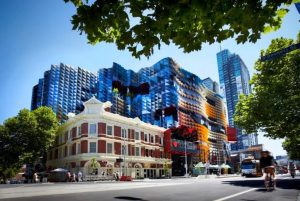 RMIT University
RMIT University
RMIT is a global university of technology, design and enterprise. One of Australia’s original tertiary institutions, RMIT University enjoys an international reputation for excellence in professional and vocational education, applied research, and engagement with the needs of industry and the community.
RMIT is a world leader in Art and Design; Architecture and the Built Environment; Engineering; Accounting and Finance; and Business and Management Studies.
RMIT hosts almost 30 FLEET researchers in theoretical physics and nano-device fabrication, who share a collaborative working and laboratory space with three other ARC research centres, as well as having access to RMIT’s micro-nano research facility. Australia’s 2nd-largest university, RMIT is magnificently located right in the heart of the Melbourne CBD.
- FLEET fields: experimental and theoretical physics, nano-device fabrication
- Chief Investigators: Lan Wang, Jared Cole, Kourosh Kalantar-zadeh (UNSW)
- PhD projects at RMIT
- Read stories about FLEET-RMIT research
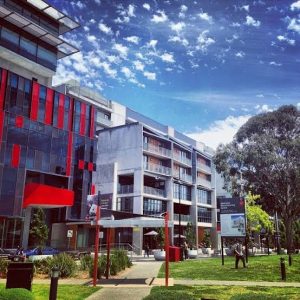 Swinburne University of Technology
Swinburne University of Technology
Swinburne is ranked in the top 3 per cent of the world’s universities (Academic Ranking of World Universities 2017). We are leading the way in science, technology, business, design and innovation. Swinburne offers undergraduate and postgraduate courses, vocational education and research qualifications.
Swinburne hosts around 20 FLEET researchers, working in fast-pulse spectroscopy and cold-atom physics. The Hawthorn campus has state-of-the-art laboratories and teaching facilities at the Advanced Technologies Centre and the Advanced Manufacturing and Design Centre. The Hawthorn area, just east of the CBD, has great train and tram access.
- FLEET fields: experimental physics, fast-pulse spectroscopy and cold-atom physics
- Chief Investigators: Chris Vale, Jeff Davis
- PhD projects at Swinburne
- Read stories about FLEET-Swinburne research
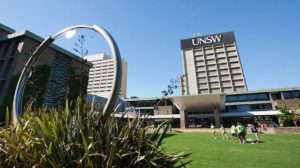 UNSW Sydney (University of New South Wales)
UNSW Sydney (University of New South Wales)
UNSW is one of Australia’s leading research and teaching universities. Established in 1949, UNSW has expanded rapidly and now has more than 52,000 students, including more than 14,000 international students from over 130 different countries. UNSW offers more than 300 undergraduate and 600 postgraduate programs, and has developed an extensive network of alumni chapters throughout Asia.
UNSW is a founding member of the prestigious Group of Eight research intensive universities in Australia and a member of the Universitas 21 international consortium.
UNSW is one of FLEET’s largest research nodes with over 50 members in the School of Physics, the School of Materials Science and Engineering and the School of Chemical Engineering.
Sydney is Australia’s most-handsome major city (pop 4.7 million), and justly famous for its harbour and proximity to beaches and national parks as well as multicultural arts and entertainment.
- FLEET fields: material science, nano-device fabrication, theoretical and experimental physics, chemical engineering
- Chief Investigators: Alex Hamilton, Dimi Culcer, Jan Seidel, Kourosh Kalantar-zadeh, Nagarajan Valanoor, Oleg Sushkov, Oleh Klochan (Canberra)
- PhD projects at UNSW
- Read stories about FLEET-UNSW research
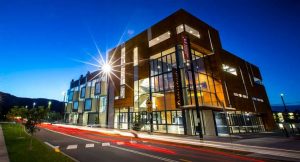 University of Wollongong (UOW)
University of Wollongong (UOW)
The University of Wollongong knows its impact extends beyond teaching and research. It’s about making use of knowledge. Being open to new thinking. Making a tangible difference. We are a modern and innovative university, internationally recognised as leaders in teaching and research.
UOW has grown from a small college serving local industry to an international university in the world’s top two percent, renowned for the quality of its research and teaching. Over 30,000 students are studying UOW degrees across nine campuses throughout Australia and Dubai, with education partnerships in Malaysia and Singapore.
We are curious, pioneering and brave. Old enough to know something may be impossible, but young enough to try anyway.
FLEET’s 12 UOW researchers study spin-quantum effects in novel materials, and fabricate high-quality materials for joint research projects, sharing facilities with other world-leading materials-based researchers at the Institute of Superconducting and Electronic Materials. Only 1½ hours’ drive or train south of Sydney, Wollongong (pop 300,000) is a relatively small beach-side city with access to bush inland as well as the famous NSW south-coast beaches.
- FLEET fields: material science, materials synthesis and characterisation, nano-device fabrication
- Chief Investigator: Xiaolin Wang
- PhD projects at University of Wollongong
- Read stories about FLEET-UOW research
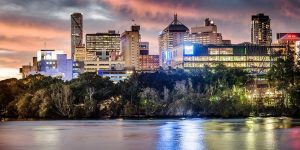 University of Queensland (UQ)
University of Queensland (UQ)
UQ in Brisbane is one of Australia’s leading research and teaching institutions. We strive for excellence through the creation, preservation, transfer and application of knowledge. For more than a century, we have educated and worked with outstanding people to deliver knowledge leadership for a better world.
UQ ranks in the top 50 as measured by the Performance Ranking of Scientific Papers for World Universities. The University also ranks 47 in the QS World University Rankings, 52 in the U.S. News Best Global Universities Rankings, 60 in the Times Higher Education World University Rankings and 55 in the Academic Ranking of World Universities (ARWU).
The University’s global research positioning was highlighted with the election of several new Fellows to Australia’s learned academies in 2016. Five new Fellows of the Australian Academy of Health and Medical Sciences (AAHMS) are UQ academics, bringing the number of UQ Fellows of this new academy to 21. Five UQ staff were elected as Fellows of the Academy of the Social Sciences in Australia (ASSA), two were made Fellows of the Australian Academy of Science (AAS), two were elected to the Australian Academy of Technological Sciences and Engineering (ATSE), and two were elected to the Australian Academy of the Humanities (AAH).
More than 164 UQ staff (including honorary and adjunct appointments) and professors emeriti are Fellows of Australia’s learned academies, which include AAS, AAHMS, ASSA, ATSE, and AAH.
UQ is one of only three Australian members of the global Universitas 21, a founding member of the Group of Eight (Go8) universities, and a member of Universities Australia.
FLEET’s 15 theoretical-physicists at UQ study non-equilibrium systems such as Bose-Einstein condensates and exciton vortices, often working closely with the ARC Centre for Engineered Quantum Systems. Brisbane (pop 2.2 million) is a laid-back, riverside city, an easy drive to some of southern-Queensland’s and northern-NSW’s most famous beaches.
- FLEET fields: theoretical physics
- Chief Investigator: Matt Davis
- PhD projects at UQ
- Read stories about FLEET-UQ research

